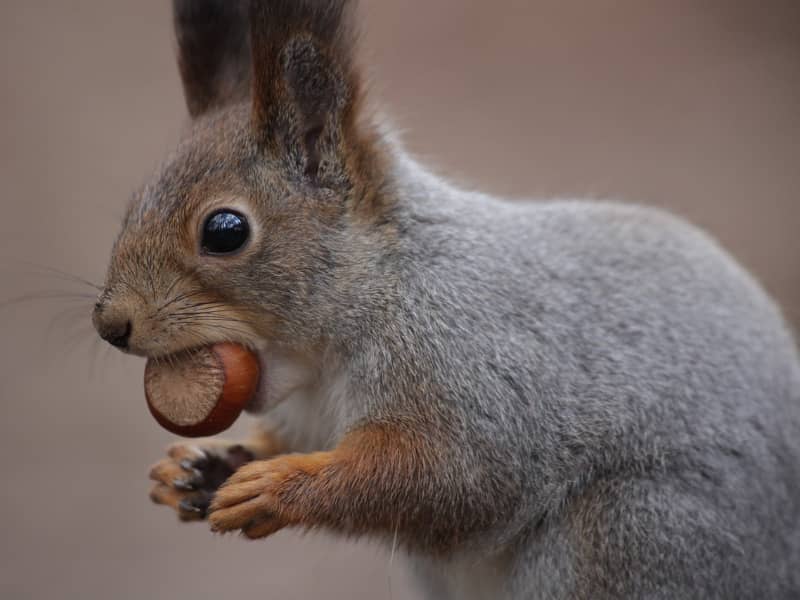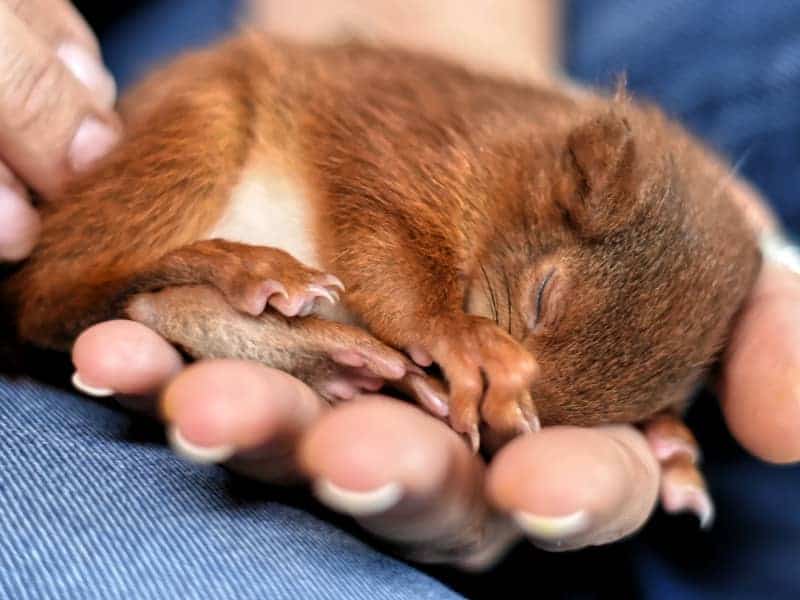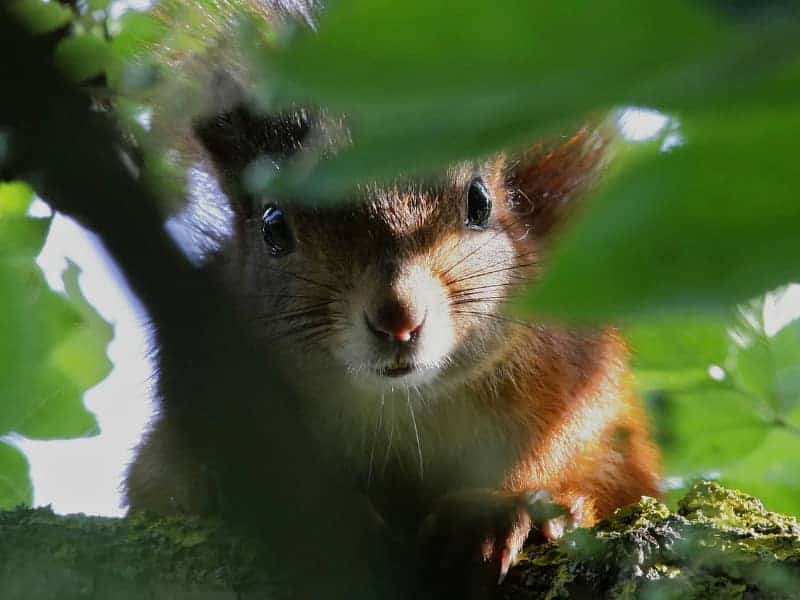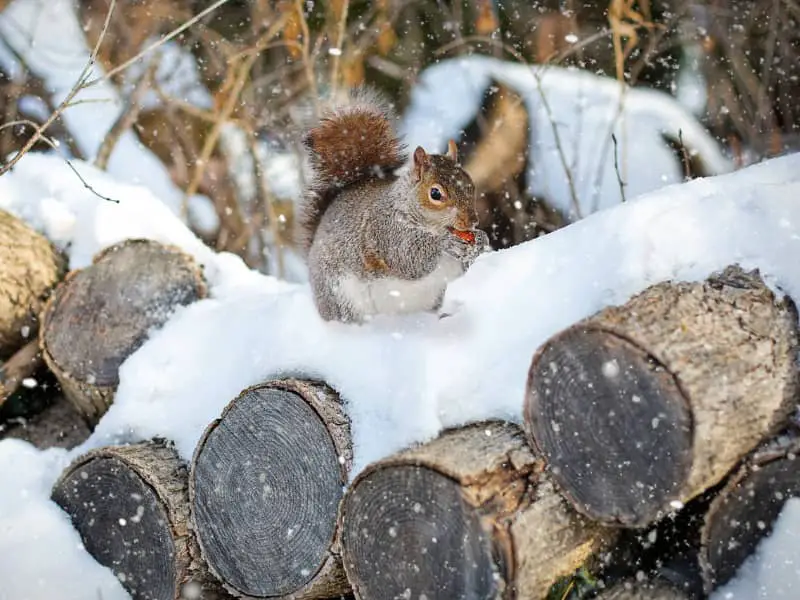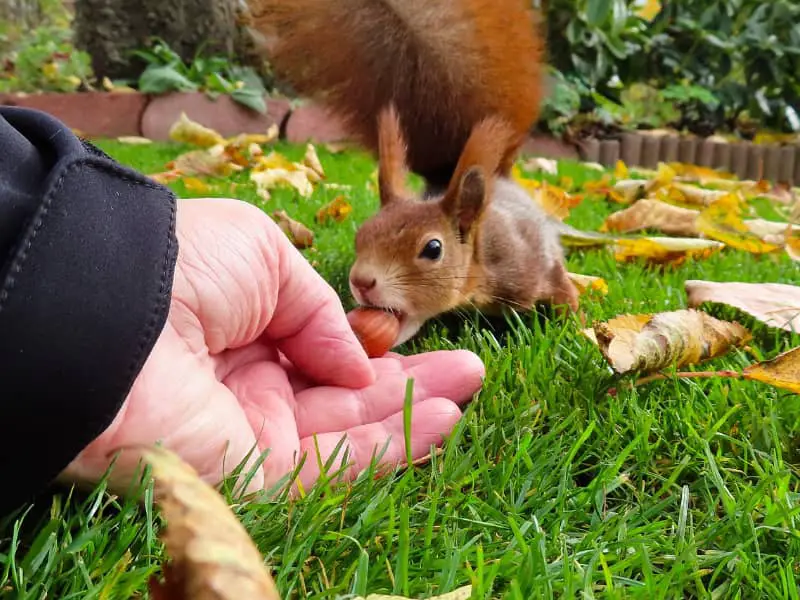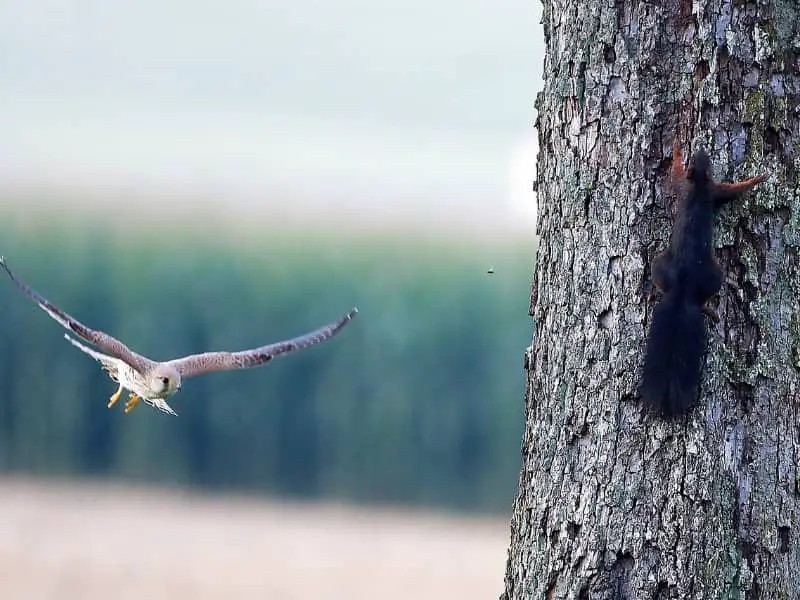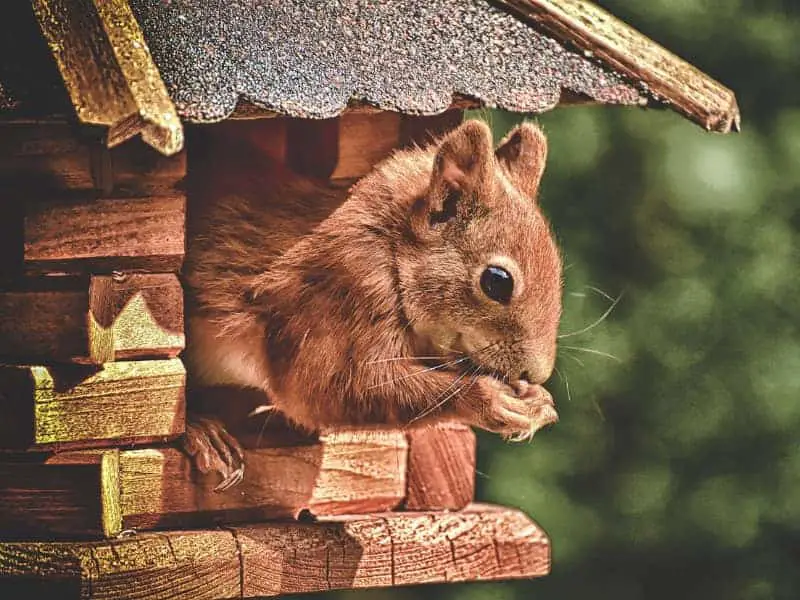
Buy squirrel food
Buying squirrel food sounds unspectacular at first glance. But there are some points to consider if you want to feed the rodents in your garden species and nature. We show you what is important when buying food for the cute rodents.
What does not belong in the food for the squirrel
Even with squirrel food you can do something wrong. In the trade there are many ready-made mixtures. These often contain peanuts. However, peanuts do not belong to the species-appropriate food for rodents.
Squirrels that live in the forest usually don't need any help when it comes to finding the right food. However, animals in cities and other populated areas are happy to have food that you provide for them.
Which squirrel food is the right one?
For the winter deposits you can buy the squirrel food, which consists of nuts with shells. Since young animals cannot crack the nut shells, you should also offer shelled nuts - but not peanuts. The same applies to almonds. Almonds can contain prussic acid and peanuts are usually infested with mold. Optimal for squirrels are suitable:
- Walnuts
- Hazelnuts
- Dried corn
- Pumpkin seeds
- Sunflower seeds
- Raisins
- Pieces of carrots
- Apple pieces
- Grapes
Is it necessary to buy squirrel food?
Surely it is easier to buy a ready-made squirrel food. However, when buying ready-made squirrel food, you should pay attention to the right mixture.
You can, of course, compose the food for the squirrels yourself from the above-mentioned components. In many cases, this is also cheaper than buying ready-made food mixtures.
Peanuts really so harmful to squirrels?
NABU says that only peanuts are unsuitable for the squirrel. They can even harm the rodents. In addition to the above-mentioned food ingredients, you can also feed the squirrel rose hips, beechnuts, seeds of various cones, mushrooms, chestnuts and berries.
Time and again, animal rights activists advise against peanuts in squirrel food. The reason is quite simple. Peanuts do not belong to the native plant species and are therefore not species-appropriate.
How much food per day?
An adult squirrel manages between 35 and 80 g of food per day. In summer it is usually a little more than in the cold season.
You can put together squirrel food yourself. This also provides variety in the food for the small rodents and they will come to your feeder with preference.
How does the squirrel find its food again?
Nuts and other food are stored in so-called winter depots. To ensure that these depots are all found again, the squirrel remembers distinctive features in the environment. This can be a large tree, for example. In addition, squirrels have a very good sense of smell, which helps them to find their numerous depots. The squirrel nose can sniff out nuts even under a 30 cm thick blanket of snow.
The right location for squirrel food
Whether you buy the feed or put it together yourself is irrelevant. Much more important is the right Location of the feed house.
- The feeder should be placed in a tree or other higher location.
- The place for the feeder should not be too close to people, because squirrels are very shy.
- The squirrel may also be using the birdhouse along with the native bird species.
- Clean the feeder regularly.
- Always provide fresh water near the squirrel feeder.
Author

-
Garden animal - A life with nature
Welcome to my animal blog! My name is Dirk and I am happy to take you on my journey through the fascinating world of animals and gardening.
Born 54 years ago, I have had an insatiable curiosity for the animal world around me since childhood. Although I have moved professionally in other industries, my true passion has always been animals and nature. It is remarkable how a small garden has become such an important part of my life.
Many of my fondest memories are associated with the animals that share our home. Whether it's the curious squirrels that scurry across the trees in the morning, the colorful variety of birds that visit our feeders, or the busy bees and butterflies that pollinate our flowers, every moment with them is invaluable to me.
This blog is my contribution to share my experiences, discoveries and insights with like-minded people. Here I will share stories of unforgettable encounters with animals, give tips on gardening and creating wildlife-friendly habitats, and take you on my journeys through nature.
Thank you so much for being here!
Cordial,
Dirk aka garden animal
Last posts
- 27. February 2024PetsVeganes Hundefutter – Grün und Gesund?
- 18. January 2024ChickensOregano für Hühner
- November 27, 2023HamsterDiurnal hamsters
- November 24, 2023HamsterHamster hammock

